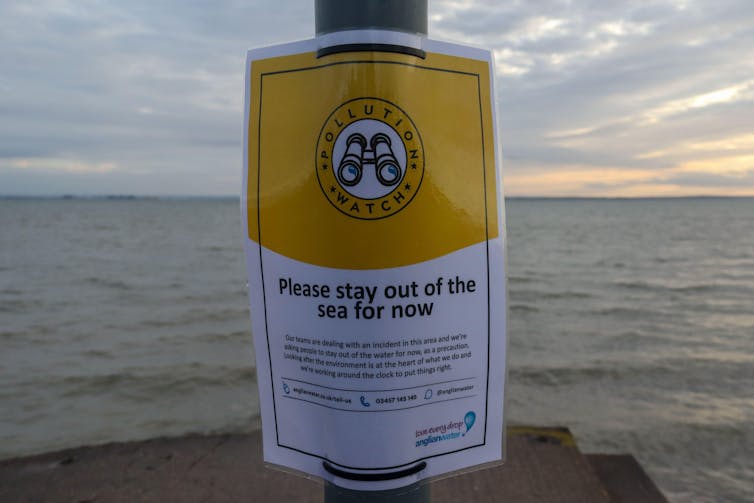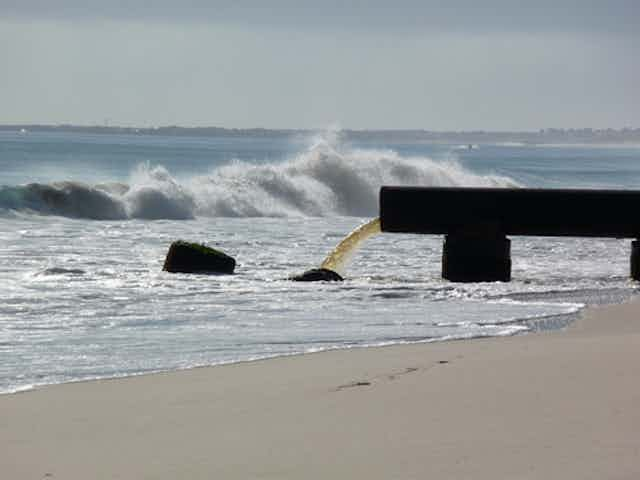Microplastics are everywhere. Snow close to the peak of Mount Everest was found to contain on average 30 microplastic particles per litre. And 11,000m below sea level, in the Pacific Ocean’s Mariana Trench, an average of 2,200 microplastic particles per litre of sediment were found.
Microplastics are bits of plastic smaller than 5mm in diameter. They come from a range of sources including toiletries, cosmetics, fibres from washing our clothes, plus a range of other routes, such as road paints, tyre wear and fragments of litter. Scientific reports are showing astounding amounts of these plastics globally, including in remote areas, but those numbers have been significantly underestimated.
Recently, there was public anger over revelations that Thames Water, a UK utilities company, released 2 billion litres of raw sewage into the River Thames in just two days. This is on the back of Southern Water’s record £90 million fine for thousands of illegal raw sewage discharges over several years. However, these stories do not report on the amount of microplastics that would have also been released within these discharges as that data is not routinely collected.
Applying an example of the average numbers of microplastics found in a litre of effluent to the amount released in the Thames case could equate to about 500 million microplastic particles entering the River Thames. This is happening all over the UK, with raw sewage being deposited along many British coastlines and rivers.
Levels of public knowledge
This is an enormous number of microplastic particles that the public is not aware of. And if the numbers are underestimated, the relevant action to tackle this pollution may not be taken. Microplastics can cause harm to aquatic life in many ways. Ingestion can cause blockages in organisms that can ultimately lead to a reduction of vital nutrients or death. They can also affect the growth of crops if they leach into the soil.
Estimating microplastics in environmental samples is notoriously difficult and laboratory methods are still being refined for different types of samples (such as water, sewage and sediments). Methods used vary in their effectiveness, and many methods only capture a proportion of the microplastics that are actually in the sample. Lab methods can be tested by “spiking” samples with known amounts of microplastic and assessing how much spike material is recovered. A recovery rate of 100% suggests the method works perfectly - but many of the current methods fall short of this.
Read more: Microplastics aren’t just a problem for the ocean – they’re in our soils too
Our research has exposed the extent of this underestimation – on average by around 14% across the 71 different research papers we assessed, but much more than that in some studies. Only 25 of them were highly accurate. We investigated a large range of environmental elements including water, sediments, soils and wastewater from illegal discharges. This is why there are more microplastics in the environment than previously thought.
Why does this matter?
Microplastics and plastic waste are some of the great environmental challenges of this century. These materials don’t degrade and disappear. They are persistent and potentially harmful as they build up in natural systems and break down into smaller, more hazardous microparticles. The UN has recognised how widespread a problem plastic pollution is with a resolution signed by member countries to reduce plastic use globally.
It is much harder to make the case for action without robust scientific evidence. The UK government has recently started to address microplastics by introducing two policies: the ban of microbeads in facial cleansers (2018) and to ban the supply of plastic straws and stirrers (2020). These are welcome but only deal with a small part of the problem. Microplastics come from a huge range of domestic and industrial sources. Nurdles (a type of plastic pellet), tyres and road paints are included in the next wave of sources we are waking up to. There is a lot of work still to be done.

Policies developed based on inaccurate estimates will be inadequate to solve the plastic problems faced worldwide. Using the Thames Water discharges as an example, the potential 500 million microplastics released could be around 570 million there, if the underestimation is taken into account. Imagine the quantity if that was magnified to a global scale.

